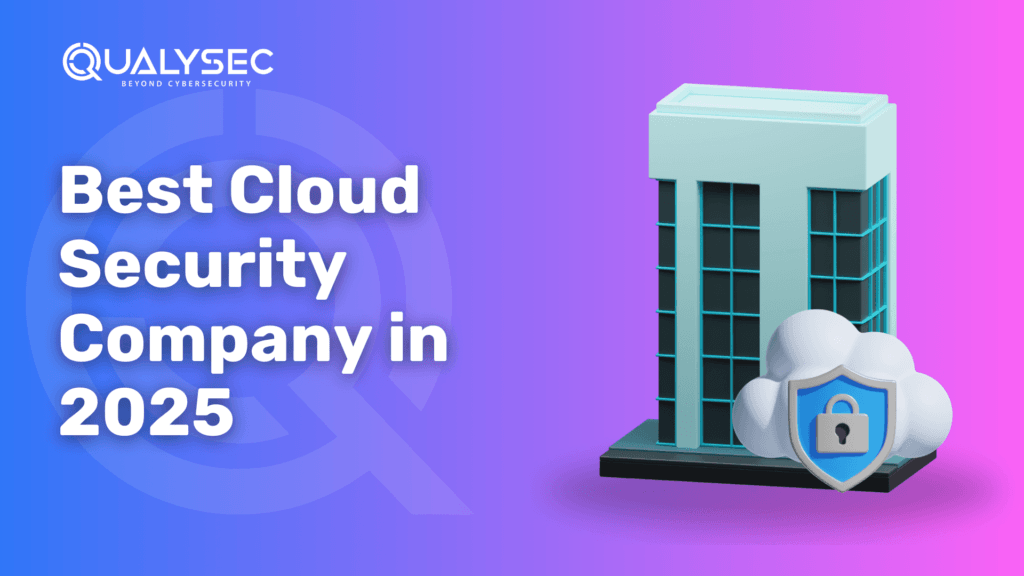Best Cloud Security Company in 2025
Securing sensitive data in the cloud has never been more critical than it is now in 2025. With the rapid adoption of cloud services across industries and increasingly complicated cyber threats, businesses, both large and small, must prioritize strong cloud security solutions to protect their operations. This blog will walk you through the important factors to consider when evaluating the best cloud security company and highlight the top companies dealing with these challenges head-on. Whether you are a small business owner, an IT professional, or a data privacy supporter, this guide is designed to help you identify the top cloud security companies partner for your unique needs. Why is Cloud Security Essential in 2025? The past few years have seen exponential growth in cloud adoption. Startups, SMEs, and even enterprises are migrating to the cloud to take benefit of its scalability, flexibility, and cost efficiency. Gartner predicts that more than 85% of businesses will operate entirely in the cloud in 2025. However, this rapid adoption comes with its challenges. Companies now store more critical data in the cloud, everything from sensitive customer information to trade secrets. With this shift, attackers have become more active and directed their efforts toward cloud environments. Unethical hackers have also evolved to match the complexity of modern cloud environments. From ransomware targeting cloud-stored data to advanced phishing that exploits vulnerabilities in collaboration tools, cyberattacks are more targeted and dangerous than ever. Businesses need advanced solutions to counter these threats and stay compliant with global data regulations. That’s why there is a need for some of the best cloud security companies for business. What to Look for in a Cloud Security Company? When choosing the best cloud security consulting partner, it is necessary to focus on the following factors to ensure complete protection. Top Cloud Security Companies in 2025 1. Qualysec QualySec is one of the best cloud security solutions and is also known for offering specialized services to protect cloud infrastructures from emerging threats. With a focus on complete security testing and personalized consulting, QualySec has established itself as a trusted partner for businesses looking to secure their cloud environments. Services Offered by QualySec Key Benefits of Choosing QualySec Features That Make QualySec Stand Out 2. Fortinet Fortinet is renowned for its AI-powered tools and unified dashboard for managing cloud security. Their solutions are crafted to detect and respond to breaches for complete cloud infrastructure security. Fortinet’s broad suite is suitable for businesses of all scales. Key Features and Offerings Why They Stand Out in 2025 Fortinet’s emphasis on real-time threat detection ensures rapid breach mitigation, making it indispensable for companies managing complex cloud environments. Their unified dashboard integrates diverse tools that offer clarity and ease of management for IT professionals. 3. Wiz Wiz has rapidly become a trusted leader in the cloud security space. Their innovative and scalable approach supports organizations in stimulating their multi-cloud and hybrid cloud deployments. Key Features and Offerings Why They Stand Out in 2025 Wiz’s combination of advanced risk assessment capabilities and ease of use has earned them recognition as a security solution customized for large businesses and startups. 4. Darktrace Darktrace is a pioneer in utilizing AI to redefine cybersecurity, including its strong focus on cloud-specific security. Their autonomous approach to safeguarding digital assets is trusted by enterprises aiming for a proactive security posture. Key Features and Offerings Why It Stands Out in 2025 Their focus on AI-driven proactive defense strategies has set them apart in the increasingly AI-integrated cloud security landscape. 5. Qualys Qualys is a veteran in the cybersecurity industry that continues to excel with its complete cloud security solutions. Their focus is on simplifying compliance and guaranteeing infrastructure resilience. Key Features and Offerings Why It Stands Out in 2025 Qualys’ reputation for reliable, scalable solutions and strong compliance support makes it a trusted name in cloud security. How to Choose the Right Cloud Security Partner for Your Business? To make sure your cloud security investment pays off, consider the following factors when choosing a provider. Prioritize Your Cloud Security Today! Cloud environments are transforming how businesses operate, offering unmatched flexibility and access. However, without proper security measures, this transformation introduces significant risks. The top cloud security companies for businesses highlighted here have set the benchmark for cloud security in 2025, providing scalable, compliant, and advanced solutions for businesses. By investing in a reliable cloud security partner, you are not just protecting your data; you are empowering your business to thrive in any complex situation. So, protect your cloud, protect your future. Start prioritizing your cybersecurity today!






